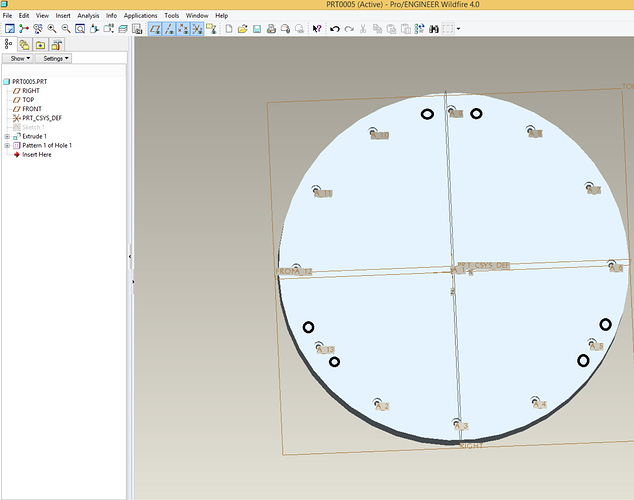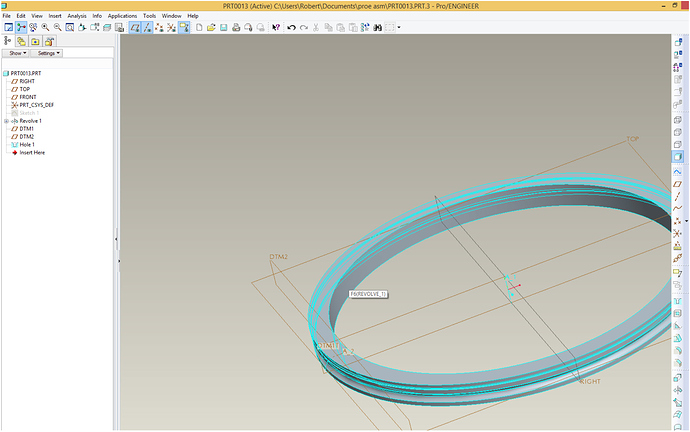QUESTION
i have a round plate with holes for screws, as seen in the attached file. I’d like to add two more holes next to a specific hole (the top one for example) and then i would like to pattern that to 3 separate instances. What’s the quickest way of creating a pattern like that? Is there any way that I could reuse existing hole so that I could do it without looking up the geometry etc (time consuming and prone to errors).
i was thinking I could just pattern the upper hole again (2 instances on each side) and then both new holes again 3x120°.
Is such course of action doable in wf 3 or 4?
The closest I’ve come so far is to create three separate holes and then pattern them in separate patterns. Is there any way to break an existing pattern?
Could you please also explain how to add the hole to the inner surface of this disk? The outer is not planar in the area where the hole needs to be and the modeler doesn’t allow me to select the inner surface. With a plane perhaps? It’s possible to machine it, so no worries.
REPLIES
mjcole
You can do a pattern table but it’s not too simple. The better choice is to do a copy & Paste use Edit Paste special or Right click if that’s been added. Copy paste allows you to make the copies tied to original dims but can be modified later if you choose to.
which allows you to Translate/Rotate mind you it defaults to translate.
Advanced Reference Positioning allows you to select new references for placement based on the original refs. I’ll try to take some screen shots of the process. Family tables on the other hand are valuable tools. Another option is to make a point Not Reference points the ones that become pnt# on creation. Last time I checked there were line centerline 2tan ref point point and Reference axis(geometry centerline)
RE: Inside hole if you are using that dtm2 tangent to cylinder remember to use thru next as depth in 2nd direction or do a two sided blind >= to depth of hole into solid. Other method is to make a point on the surface or offset from distance along axis and use a coaxial hole.
SOURCE
https://www.eng-tips.com/viewthread.cfm?qid=370066
Above is a snippet.

